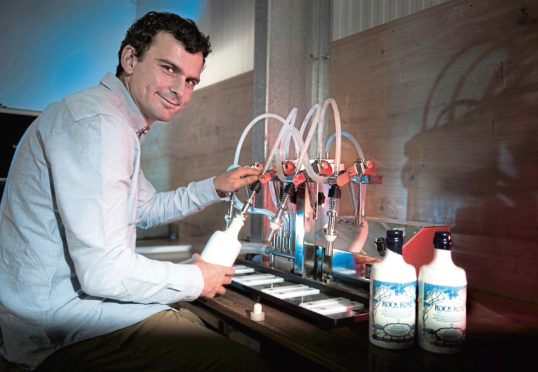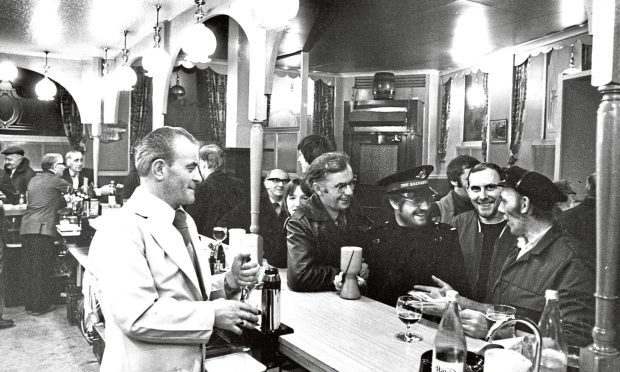FEW drinks have enjoyed such a successful makeover as gin.
Once decried as “mother’s ruin” and vilified in artist William Hogarth’s 1751 depiction of “Gin Lane”, the spirit has gone from being caricatured as the Queen Mum or Princess Margaret’s tipple of choice to a hipster staple enjoyed even by millennials increasingly turning their backs on alcohol.
The volume of gin sold in the UK has soared during the past decade, growing by 33% in 2018 alone, according to figures from International Wine & Spirit Research (IWSR).
The same data showed gin’s slice of the UK spirits market doubled from 9% by volume to 18% between 2008 and 2018, with its share of retail sales by value accelerating even faster from 9% to 19% over the same period.
But – whisper it – that growth may just be coming to an end.
A note issued in December by asset management and research firm Alliance Bernstein to its clients analysed figures from data monitoring company Nielsen.
They highlighted gin’s rolling three-month volume growth had fallen from a high of more than 50% in 2018 to just 4% between August and October last year, while the rolling three-month price-mix had contracted by 0.4%, the first time in “some years” it had turned negative.
“Although we caution against taking these numbers as a completely accurate reflection of manufacturer sales, due to the limitations of off-trade-only Nielsen data, it does look like this could be the beginning of a sea change in UK gin trends,” the note said.
“It appears as if the market has now reached saturation for ever higher priced new entrants, with ever more obscure botanicals.”
What effect could reaching “peak gin” have on distillers in the north of Scotland? If sales start falling then could mergers and acquisitions be on the cards in the gin sector?
“The craft players that have only been on the market for one or two years and which have very optimistic growth projections are likely to be disappointed – and their financial backers as well,” Trevor Stirling, managing director of European beverages at Bernstein told The Press and Journal. “Some of the craft brands that have achieved critical mass and have a distinct positioning could still be of interest to the majors, particularly those that have proven potential outside the UK, but there’s going to be a shake-up – it’s going to be tough.”
Stirling reeled off a list of big players that had already acquired craft distillers, including Teacher’s blended Scotch owner Beam Suntory buying Sipsmith, Benriach parent Brown-Forman taking over Ford and Pernod Ricard – the French group behind Chivas Brothers – swooping on Monkey 47, Canadian label Ungava and Malfy in Italy.
He thinks there will still be room on the shelves for micro-distillers, if the UK craft gin market continues to evolve along the same lines as the craft beer sector in the United States.
“It doesn’t make sense to have ultra-local, but regional craft brands are likely to have a following, like Adnams’ Copperhouse Gin in Suffolk, Warner’s very distinctive rhubarb gin, or Edinburgh Gin, which has a strong local presence,” he added.
“Brands like those will thrive, but it’s the next tier down from those that will find it tough.”
Liam Hughes, chief executive and co-founder of the Glasgow Distillery Company and acting chairman of the Scottish Distillers’ Association (SDA), is not so sure that we have reached “peak gin” just yet.
“That’s the $60 million question that everyone’s trying to get their head around,” he admitted.
“The top-line figures would say not, but there’s only so much gin you could sell in the UK. People talk about ‘peak gin’ but, everywhere I look, consumers are still interested in innovative, high-quality products.”
Yet distillers are taking the threat of gin burnout seriously. Hughes explained many SDA members are diversifying into rum, vodka and even whisky, as well as targeting export markets that are a long way from “peak gin”.
“Figures will be masked heavily by big brands like Gordon’s, Beefeater and Tanqueray, which sit outside what SDA members do,” he added. “We play in a very different marketplace to them and, for some of our members, their consumer base is very local.
“For those that are a bit larger, they’re not necessarily looking for supermarket listings because they wouldn’t be able to produce gin in high enough volumes.
“Instead, they’re working with independent retailers, which are more interested in higher-quality products with provenance and a story behind them.
“Logically, if businesses are solid and secure and have aspirations to grow then there will be opportunities in the marketplace. I certainly wouldn’t be surprised to see mergers and acquisitions over the next 24 months.”
Stuart Ellis, head of Elgin-based drinks company Gordon and MacPhail’s (G&M’s) UK wholesale business, is upbeat about the prospects for gin. G&M also owns the Benromach Distillery in nearby Forres, where it makes Red Door gin.
“Although this has slowed over the past six to nine months, gin is definitely still a growing market,” he said. “We were receiving daily communication from new producers and now, as a general rule, we’ll receive one or two each month.”
From a distillery perspective, Martin Murray – who founded Dunnet Bay Distillers in Caithness six years ago with his wife, Claire, to produce Rock Rose gin and Holy Grass vodka – expects to see mergers and acquisitions in his sector.
Not only has Rock Rose tasted success in the UK but the brand has also made great progress in America and will be on sale in an impressive 33 states by the end of the year; no mean feat given the country’s complicated three-tier distribution system.
“It’ll be a copy of what’s happened with breweries over the years – you’ve seen brewers merge to form bigger breweries and that’ll happen with gin as well, especially in areas where there are two or three distilleries,” said Murray.
“The bigger factor is that the big guys want small distilleries because those are the gins consumers want to drink – we’ve seen that with Monkey 47 and Sipsmith, which were both snapped up.”



